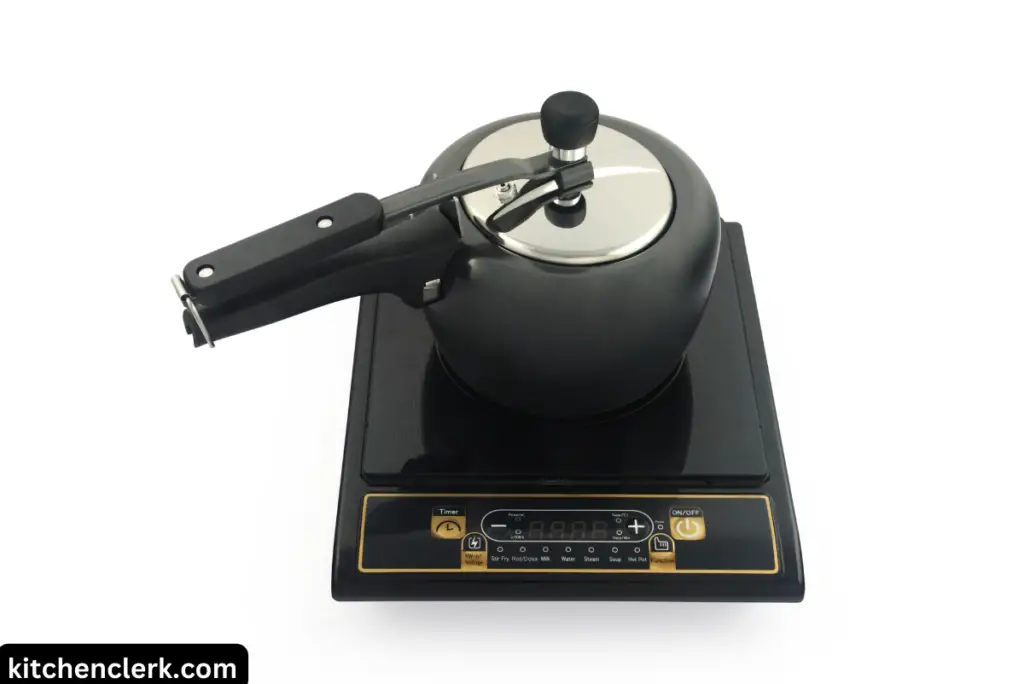When you think of a pressure cooker, one of the features that often stands out are the plastic handles.
You may have wondered why pressure cookers are designed with plastic handles instead of something more heat-resistant like metal or silicone.
As a seasoned kitchen professional with years of experience working with pressure cookers, I can shed light on this question.
In this blog post, we will explore the reasons behind the use of plastic handles on pressure cookers and discuss the advantages they offer. So, if you’ve ever pondered the purpose of those plastic handles or are considering purchasing a pressure cooker, this post is for you.
Get ready to discover the logic behind this common feature and gain a deeper understanding of the design choices made in pressure cooker construction.
The Importance of Handles in Pressure Cookers
Pressure cookers are designed to cook food under high pressure, which helps in reducing cooking time and retaining nutrients in the food.
However, the process of cooking under pressure generates a considerable amount of heat, making it essential to have handles that are cool to the touch.
The handles of a pressure cooker provide a safe and convenient way to carry and move the cookware, even when it’s hot. They allow users to lift and transport the pressure cooker without the risk of burning their hands.
Therefore, the choice of material for the handles is vital to ensure the overall safety and usability of the pressure cooker.
Why Plastic Handles?

1. Heat resistance
One of the primary reasons pressure cookers have plastic handles is because plastic is an excellent insulator. It does not conduct heat as efficiently as metals, making it a safer choice for handling hot cookware. Plastic handles have high heat resistance, allowing them to stay cool even when the pressure cooker is subjected to high levels of heat during cooking.
I remember my experience when I first started working with pressure cookers with plastic handles. I was initially skeptical about their durability and how they would withstand high temperatures. However, after using them extensively and observing their performance, I was pleasantly surprised by their ability to remain cool to the touch even after prolonged exposure to heat.
2. Lightweight and ergonomic design
Another advantage of using plastic handles in pressure cookers is their lightweight nature. Plastic is considerably lighter than metal, making the pressure cooker easier to handle and maneuver. The lightweight design also helps reduce strain on the wrists and arms during lifting and carrying.
Moreover, plastic handles can be ergonomically shaped to provide a comfortable grip. The contoured design ensures a secure hold, preventing accidental slipping or dropping of the pressure cooker. The ergonomic shape, combined with the lightweight feature, makes plastic handles user-friendly and convenient.
3. Non-conductive and non-corrosive
Plastic handles are inherently non-conductive, meaning they do not conduct electricity. This quality is essential for the safety of the users, especially when using electric pressure cookers. The non-conductive nature of plastic handles prevents any electrical current from passing through and eliminates the risk of electric shocks.
In addition to being non-conductive, plastic handles are also non-corrosive. They do not rust or corrode when exposed to moisture, which is often the case in a kitchen environment. This durability ensures that the handles will last longer and maintain their functionality even with regular use and exposure to water or steam.
4. Versatility and aesthetic appeal
Plastic handles offer versatility in terms of design and aesthetics. They can be molded into various shapes, sizes, and colors. This flexibility allows manufacturers to create attractive and stylish handles that complement the overall design of the pressure cooker.
Furthermore, plastic handles can be textured or coated to enhance their grip and provide a more secure hold. This feature is particularly beneficial when dealing with wet or greasy hands during cooking. The textured surface reduces the chances of slippage and ensures a firm grip on the pressure cooker.
Can Plastic Handles on Pressure Cookers Melt When Heated?
No, the plastic handle on pressure cooker cannot melt when heated. Plastic handles on pressure cookers are designed to withstand high temperatures and are made from heat-resistant materials. However, it is important to note that not all plastics are created equal.
Some plastics have lower heat resistance and may melt or deform when exposed to extreme temperatures. Therefore, it is crucial to choose pressure cookers with handles specifically designed to withstand the heat generated during cooking.
Manufacturers of pressure cookers take into consideration the high temperatures that the handles may be subjected to and select materials that can withstand those conditions. Heat-resistant plastics, such as phenolic resin or polyamide, are commonly used for this purpose. These plastics have excellent thermal stability and are engineered to maintain their structural integrity even under intense heat.
In Conclusion
The presence of plastic handles in pressure cookers serves several practical purposes, including heat resistance, lightweight design, non-conductivity, and versatility.
These features contribute to the overall safety, functionality, and user-friendliness of pressure cookers. With proper care and maintenance, plastic handles can provide a durable and reliable grip for convenient cooking experiences.
Have you used a pressure cooker with plastic handles? What has been your experience with them? Share your thoughts and experiences in the comments below.
